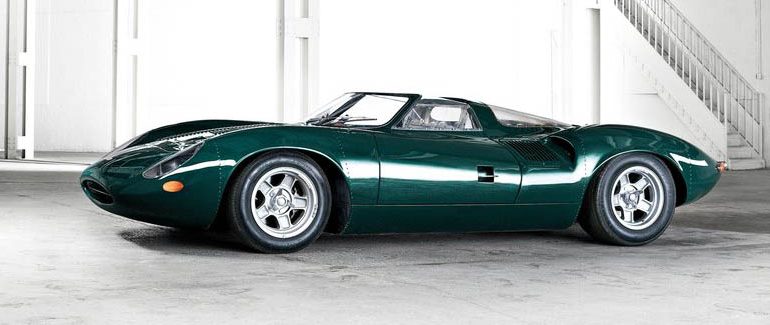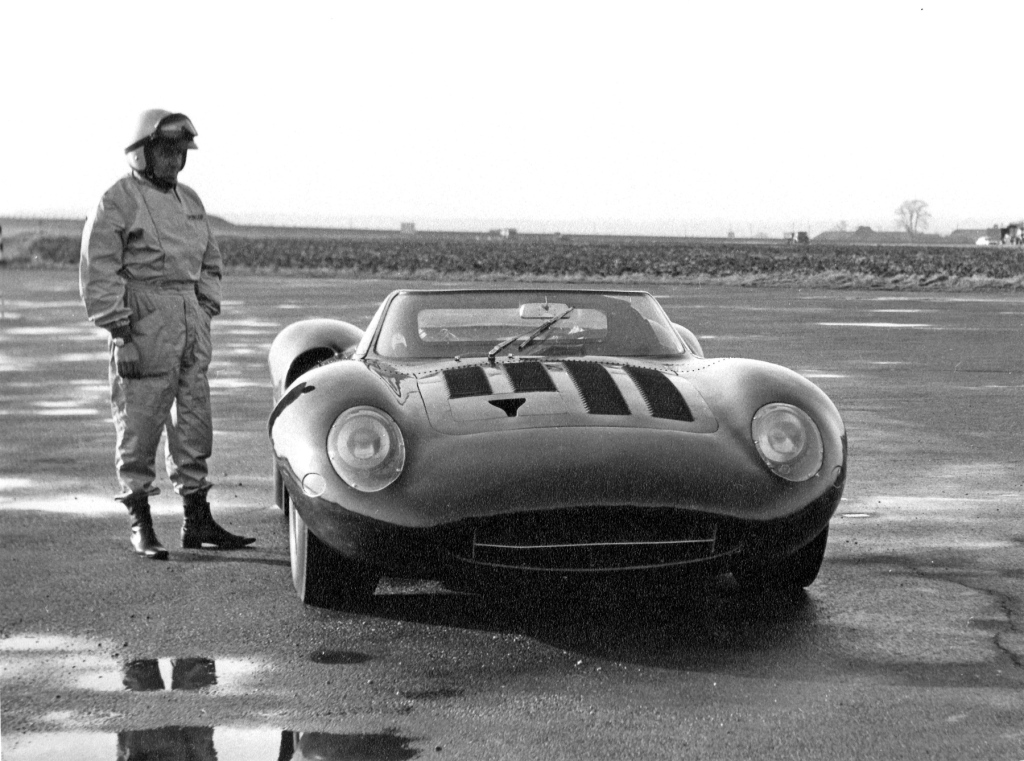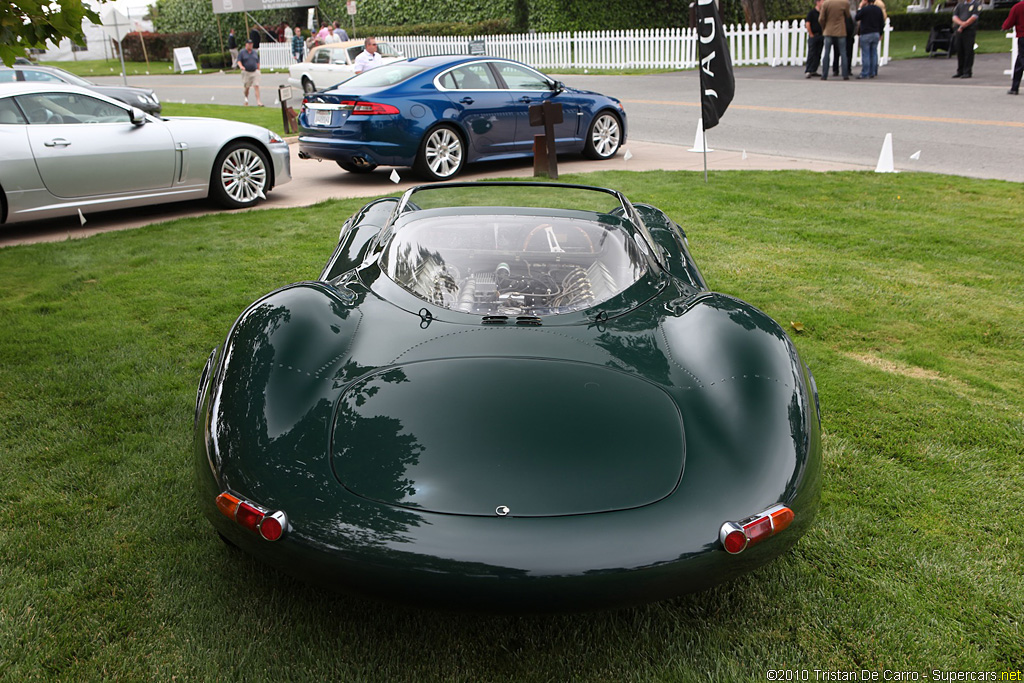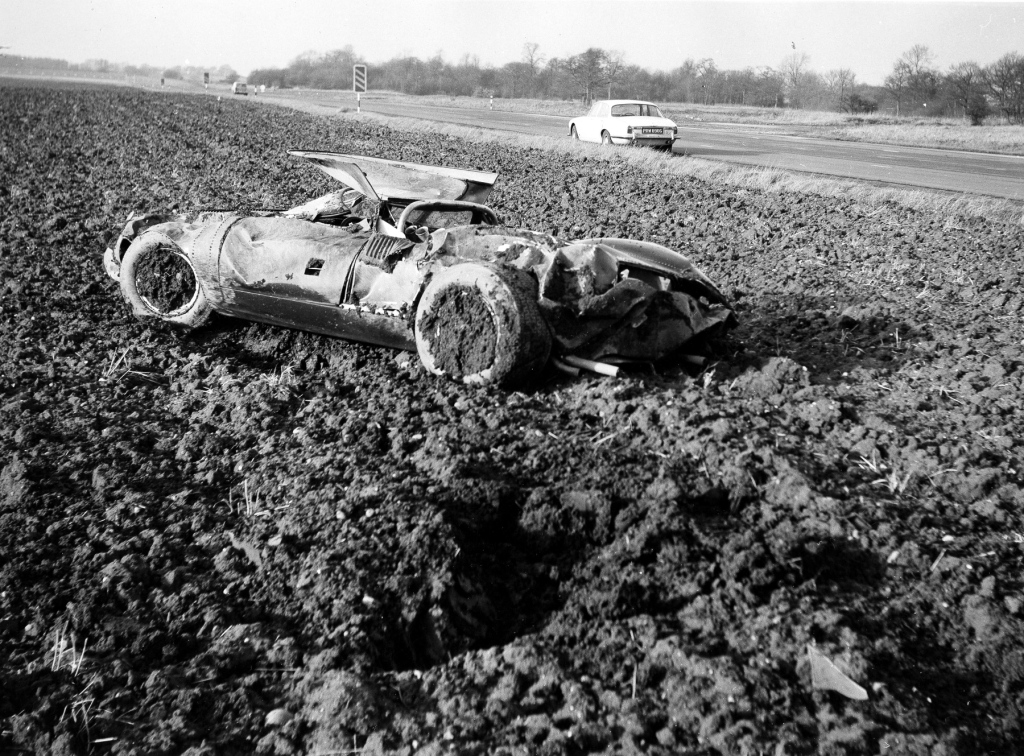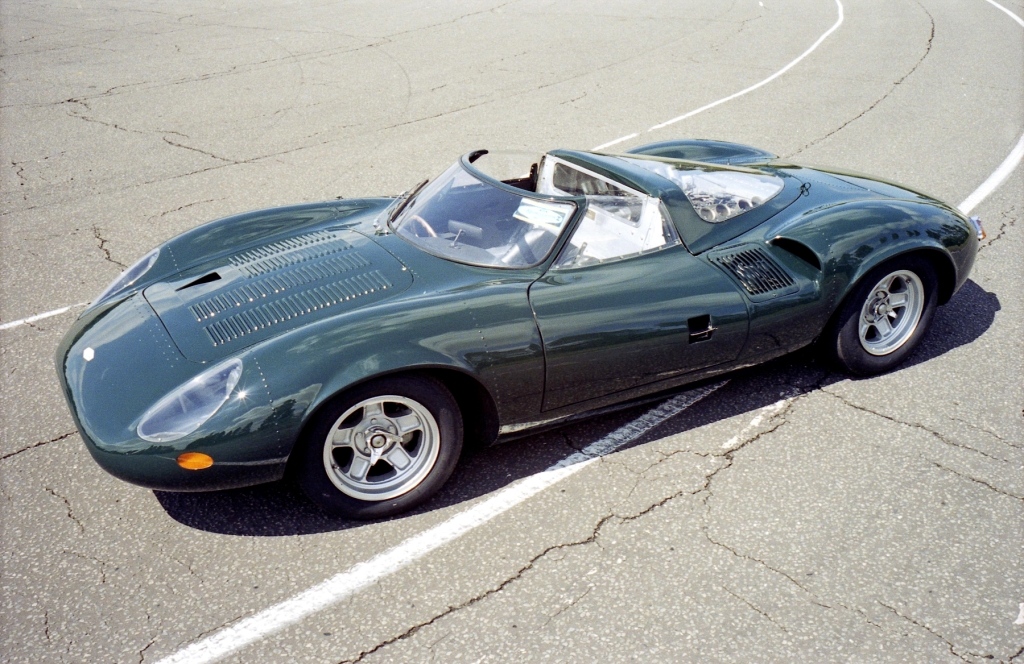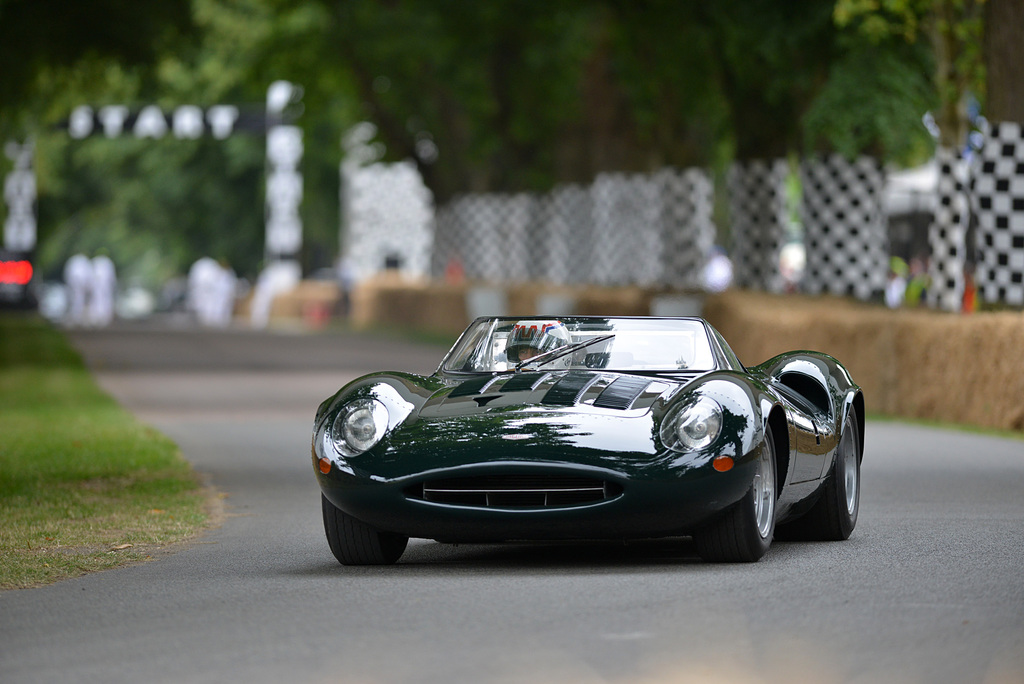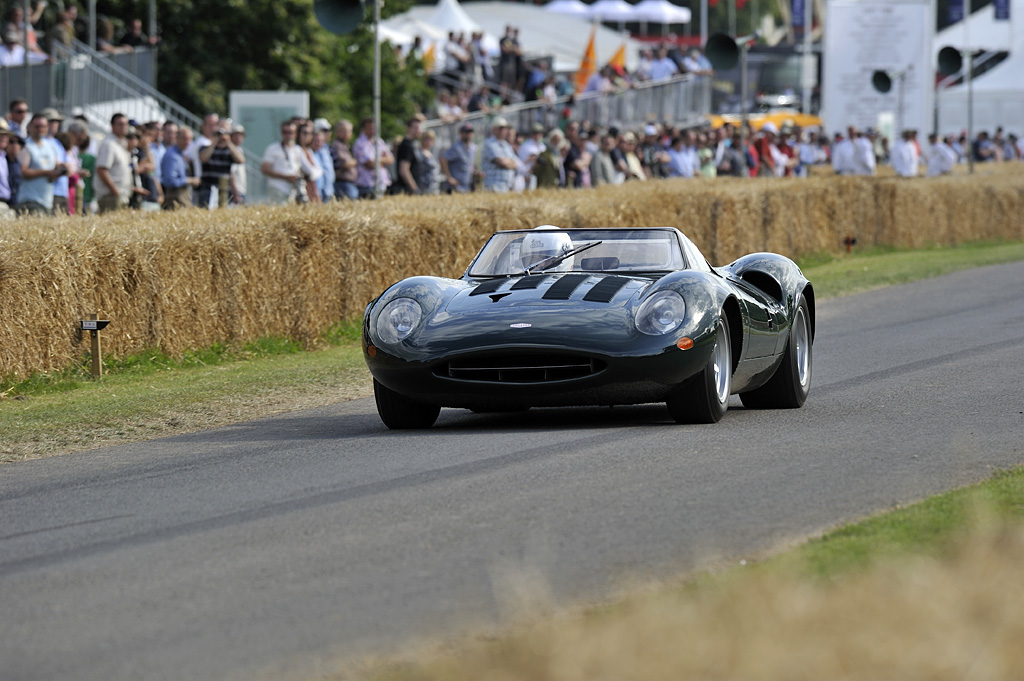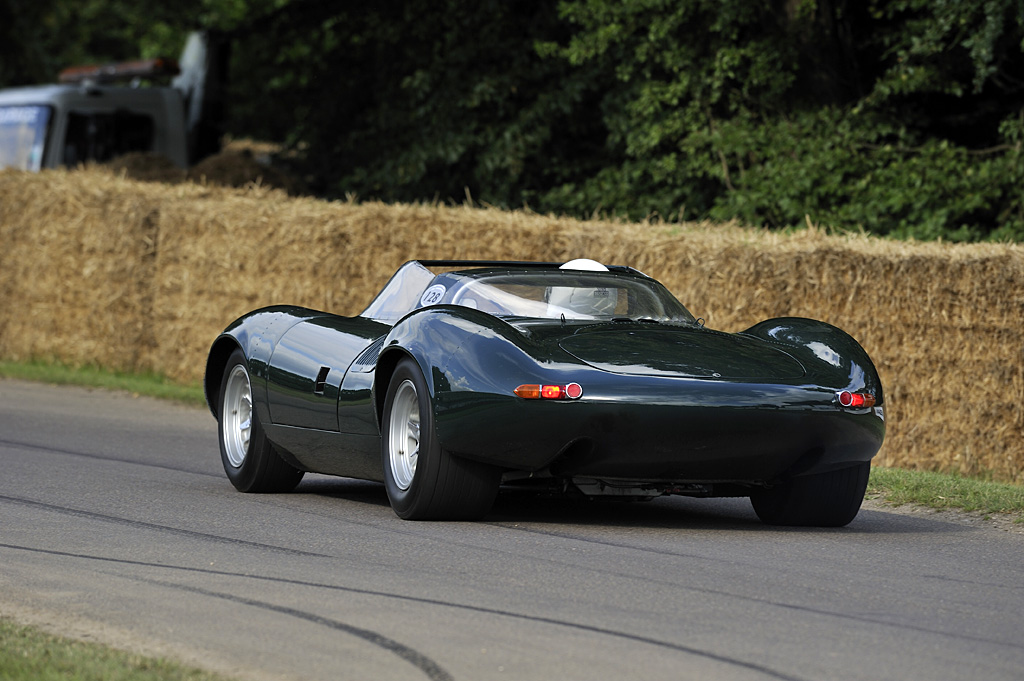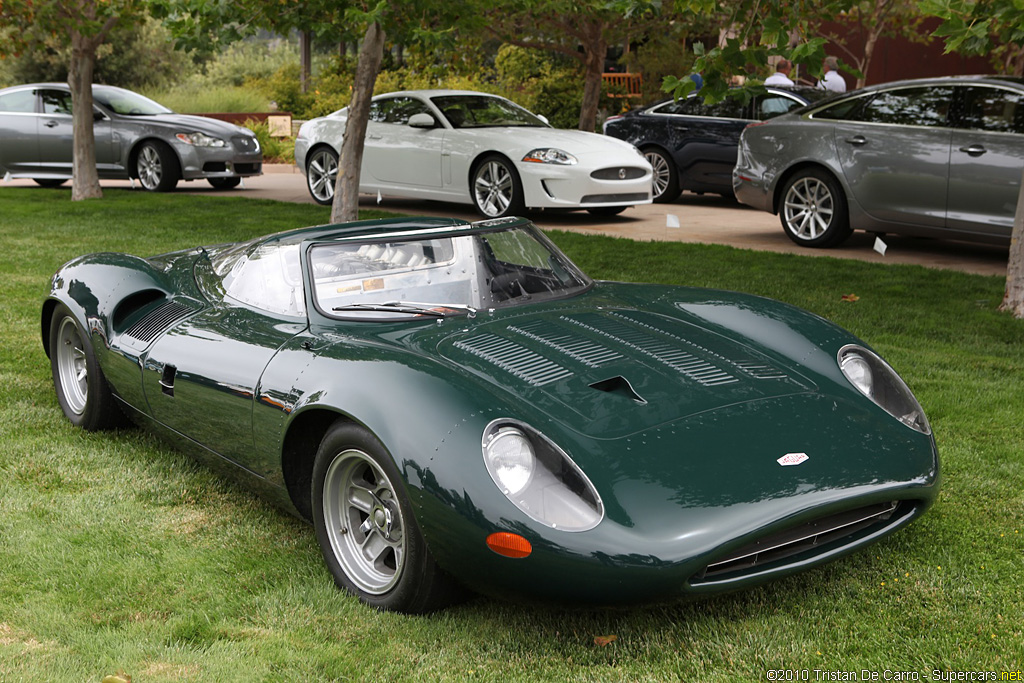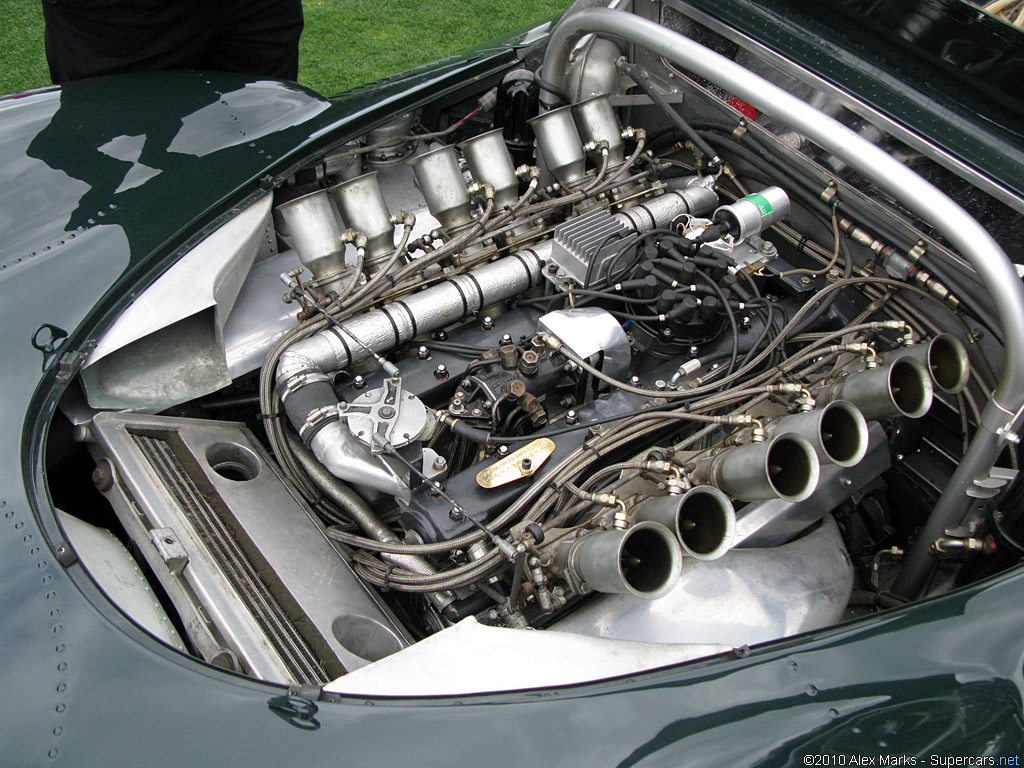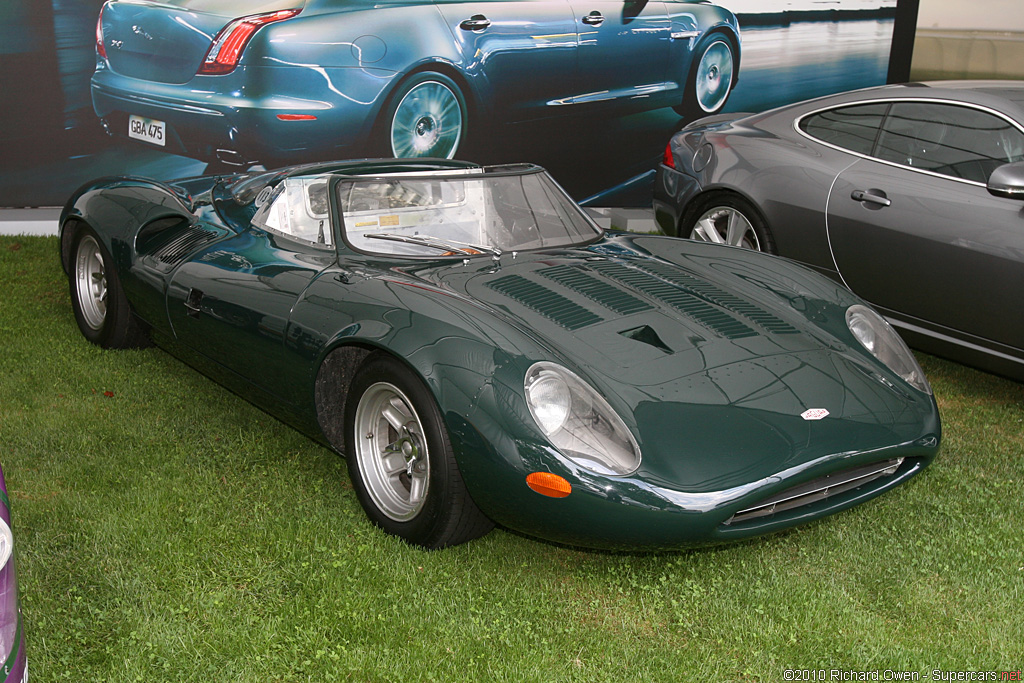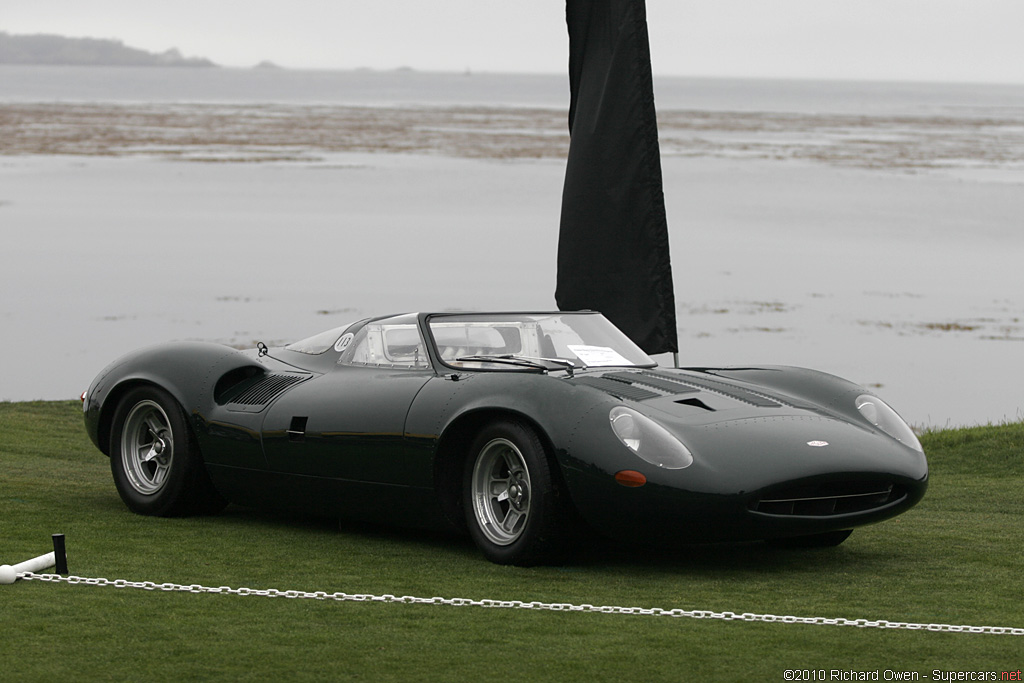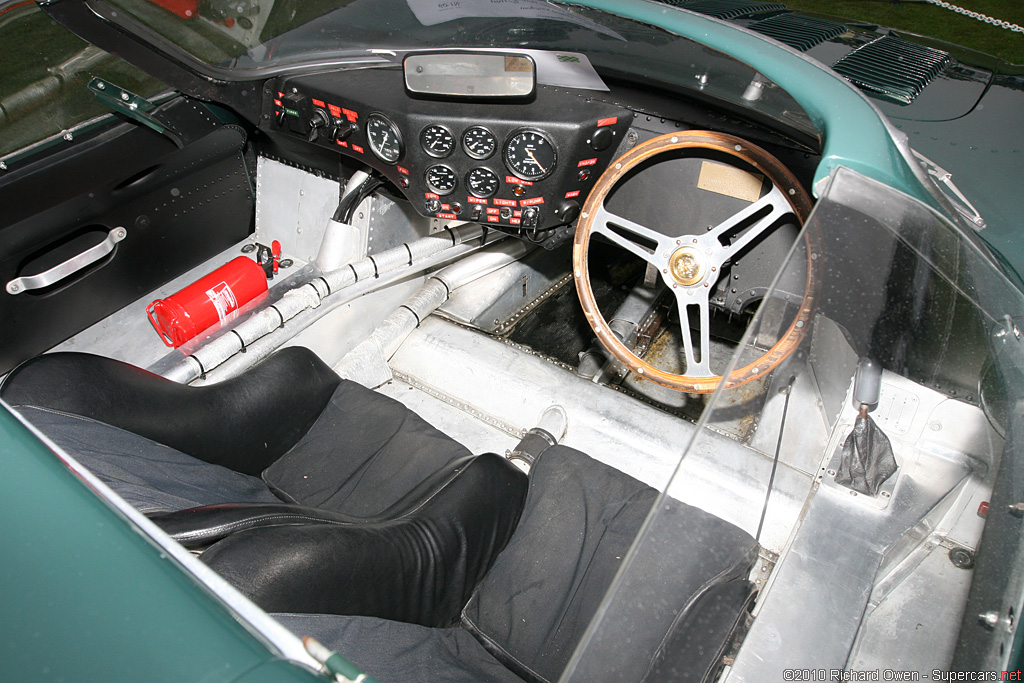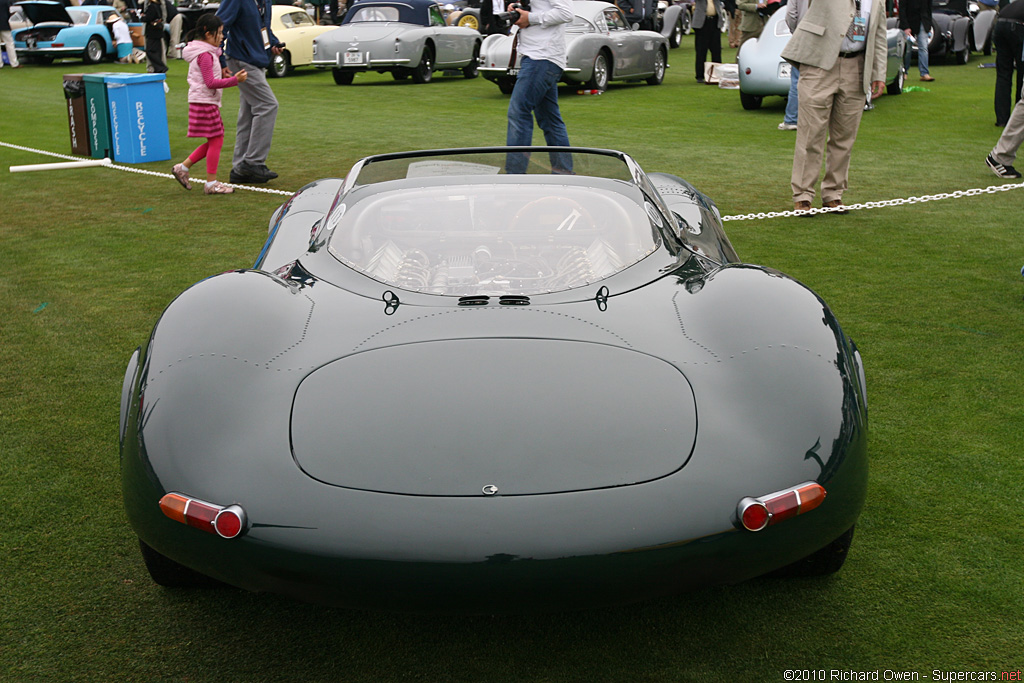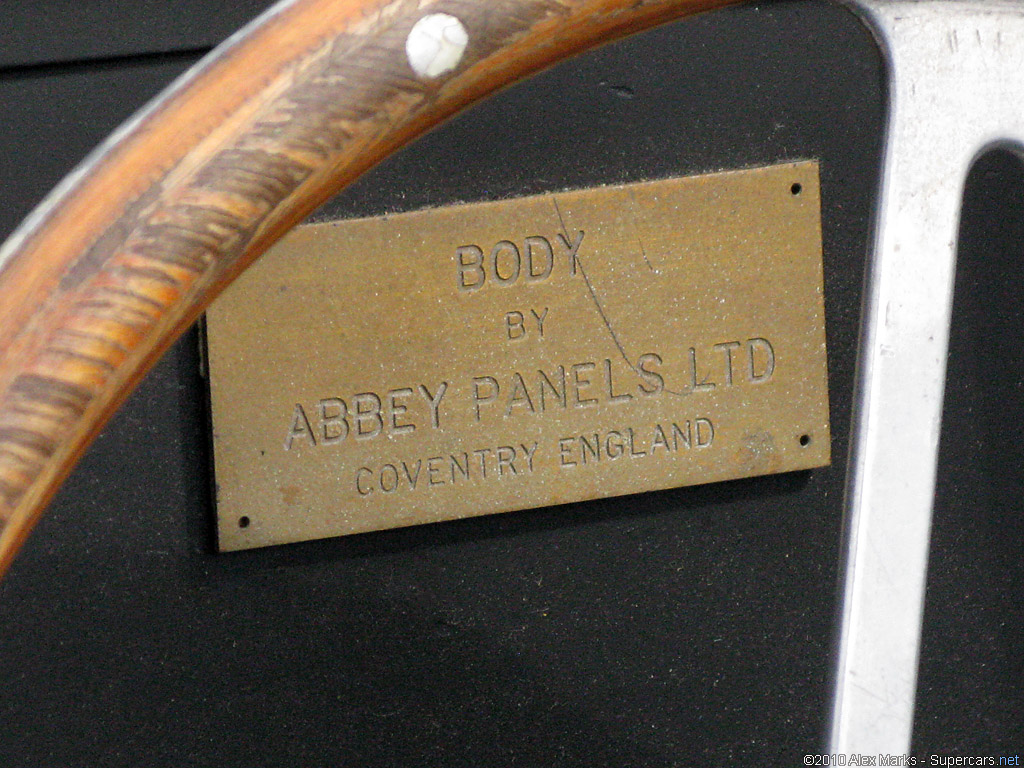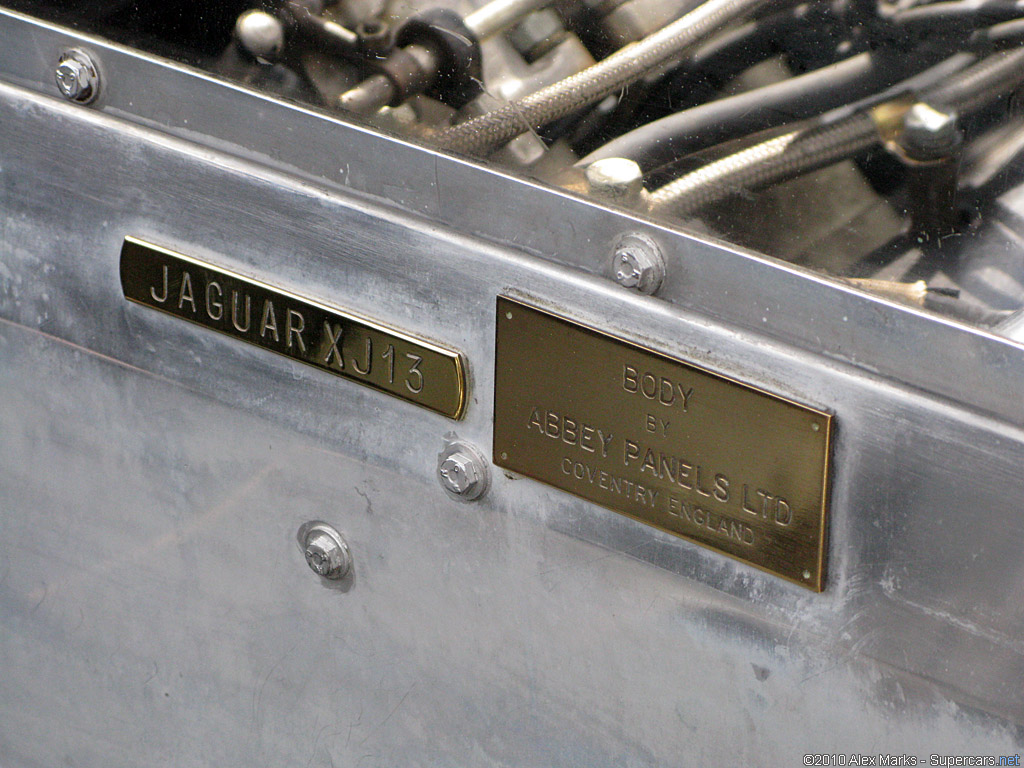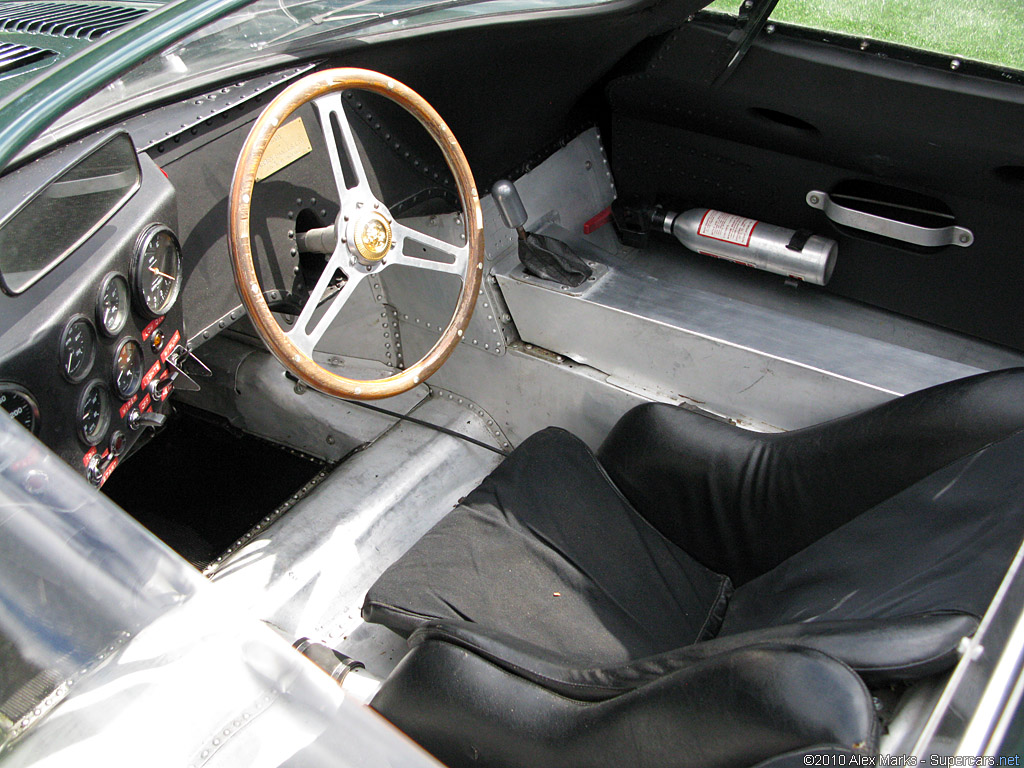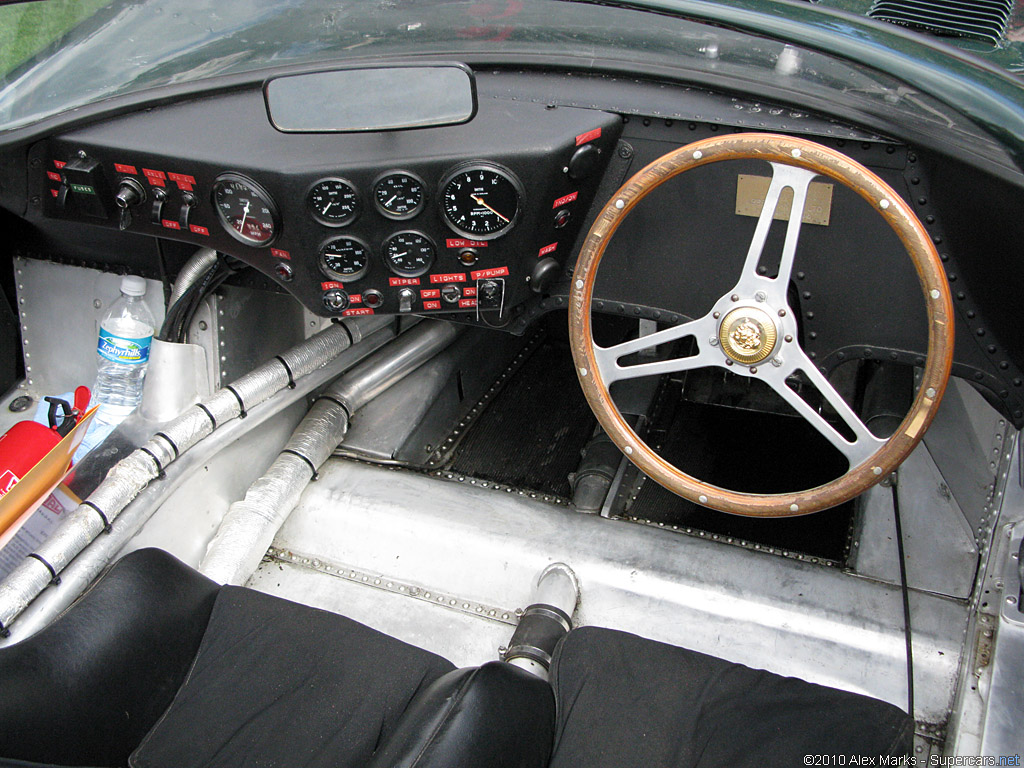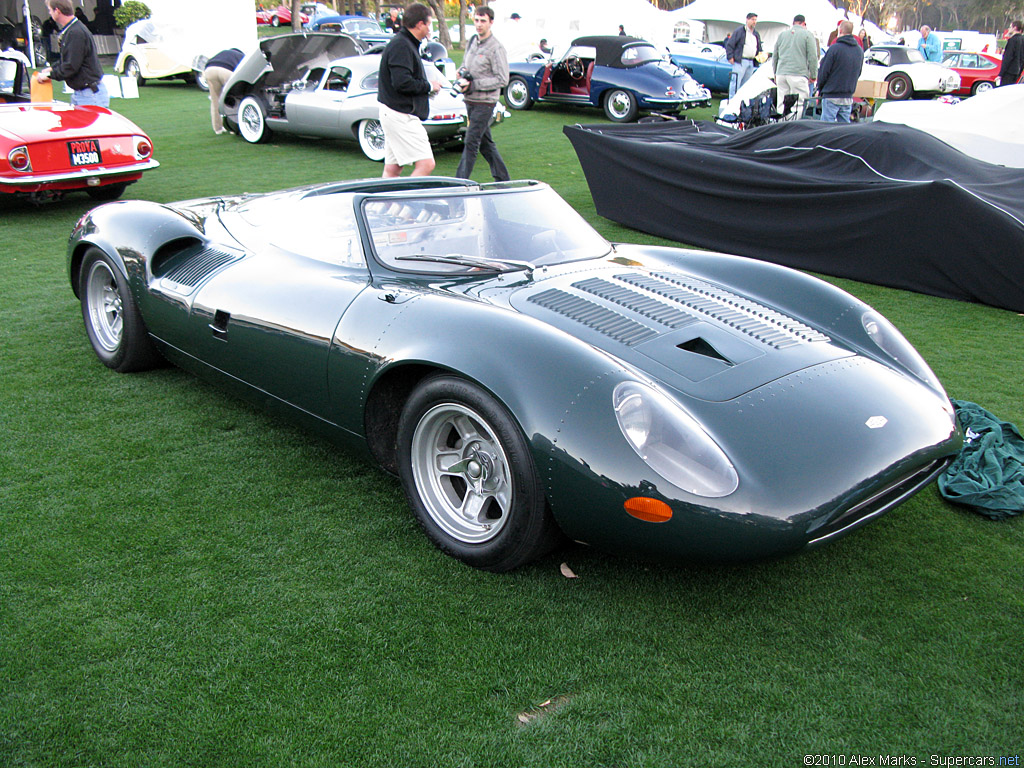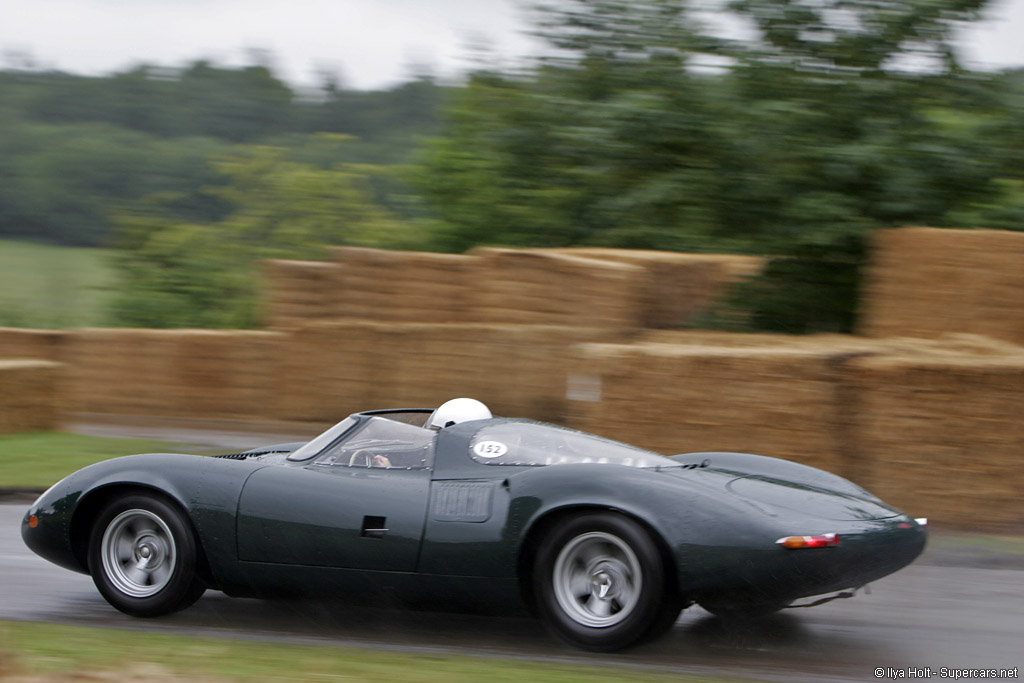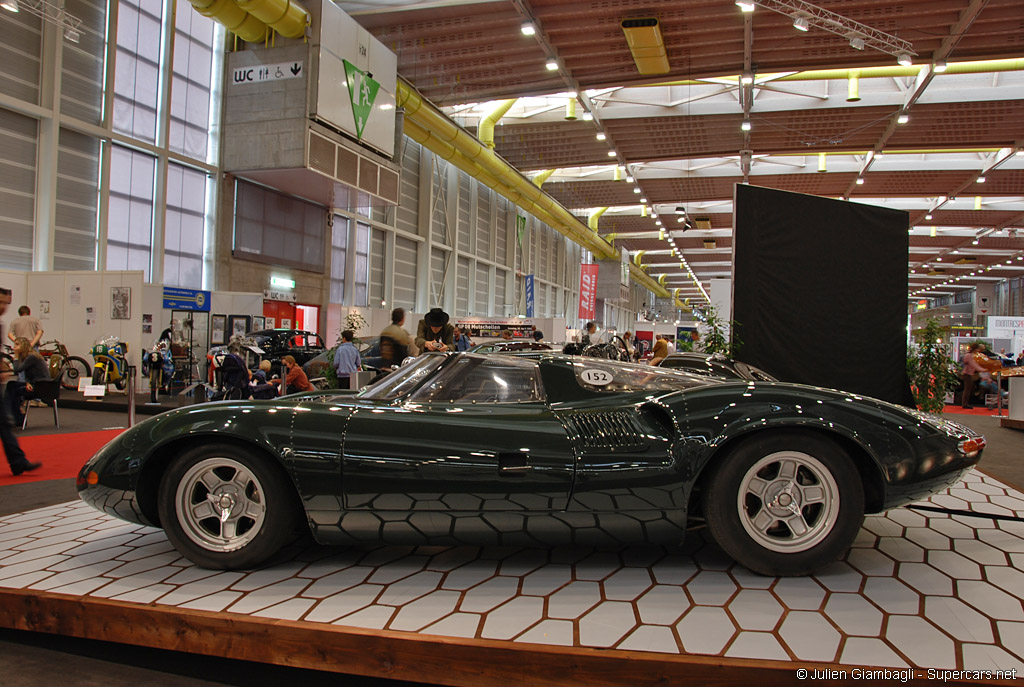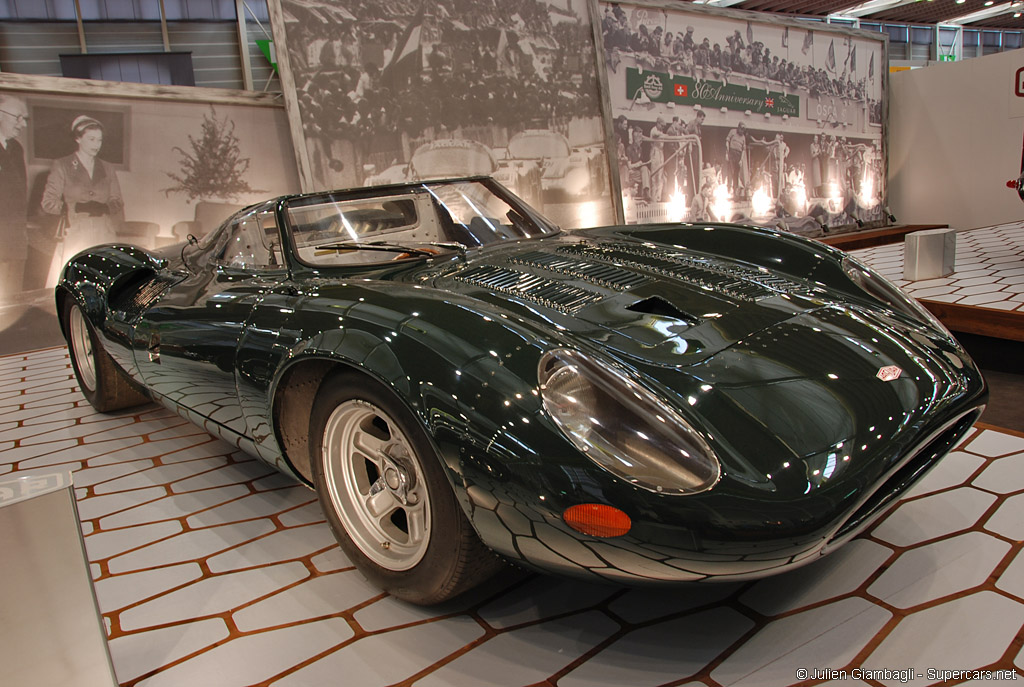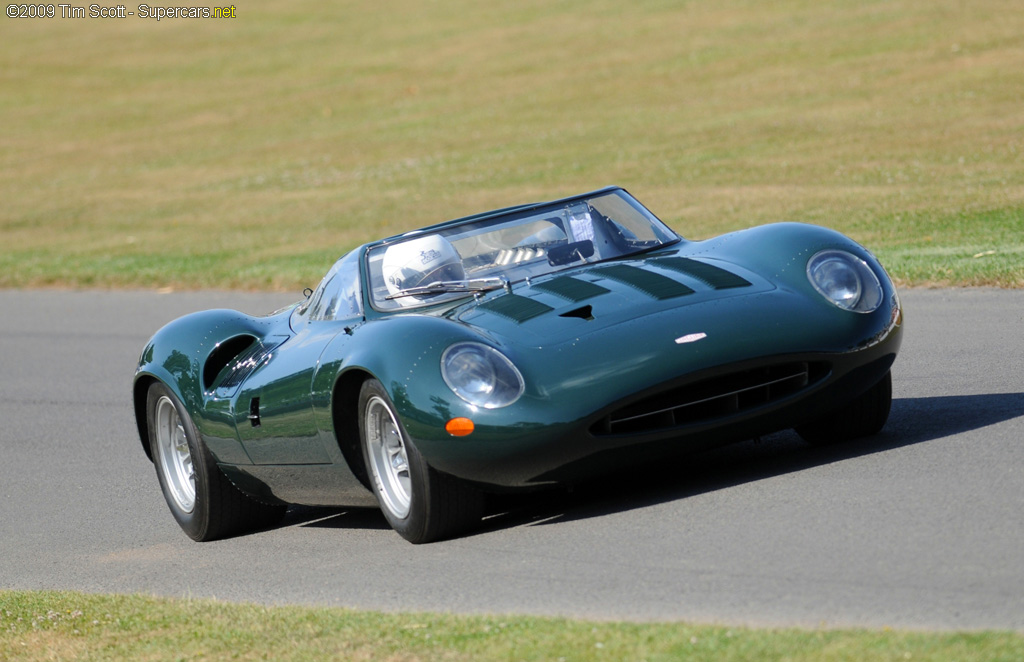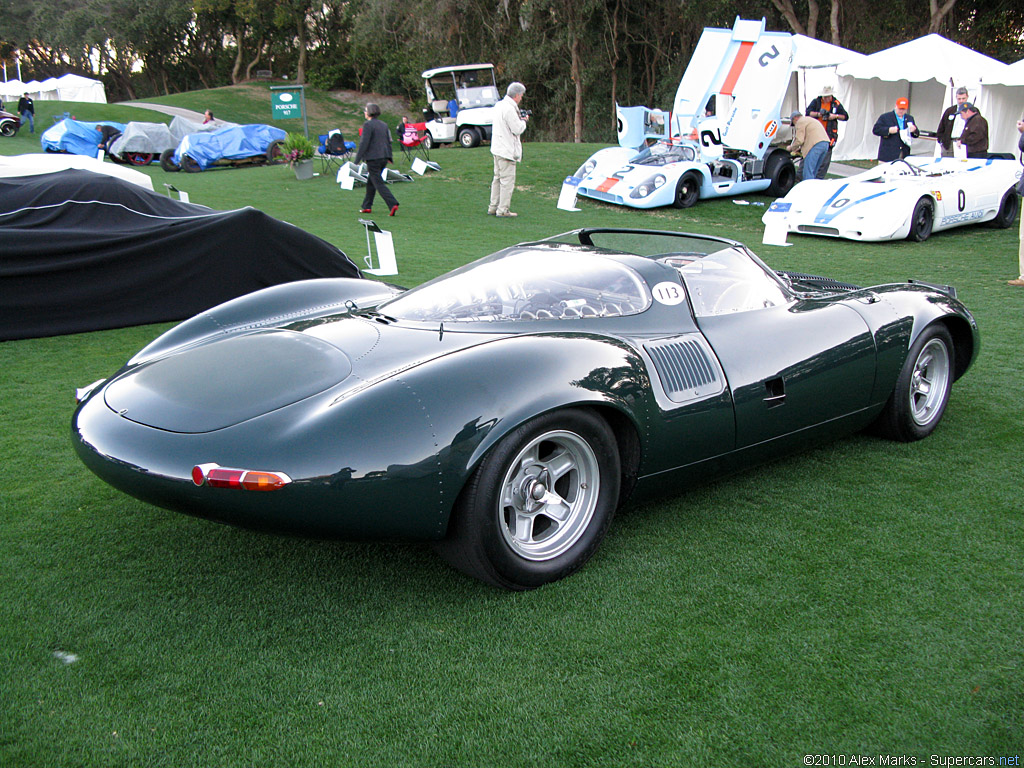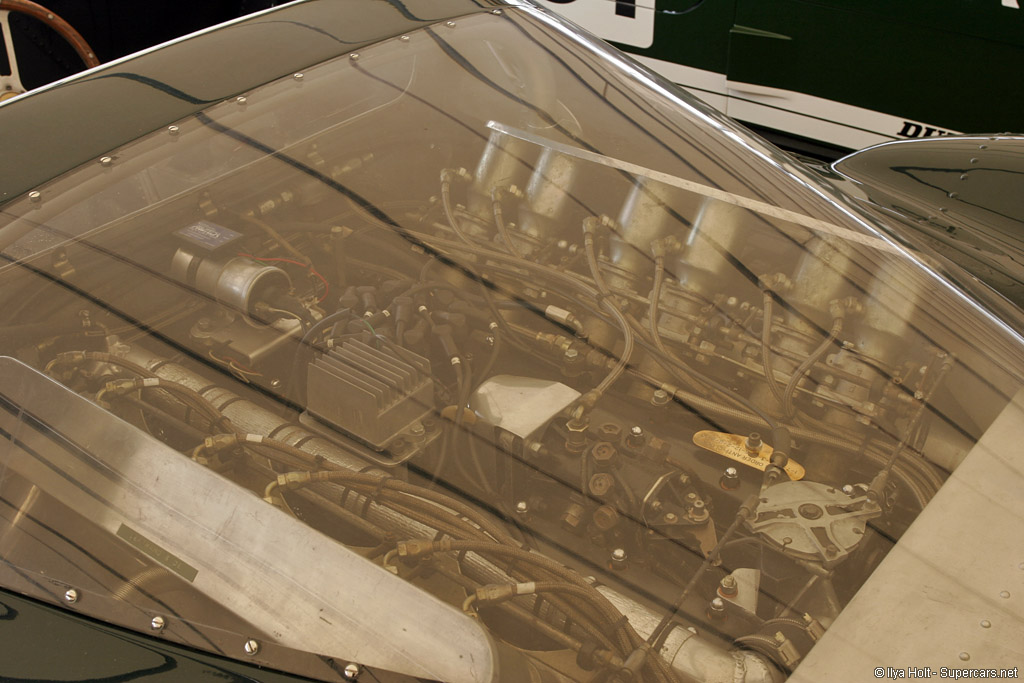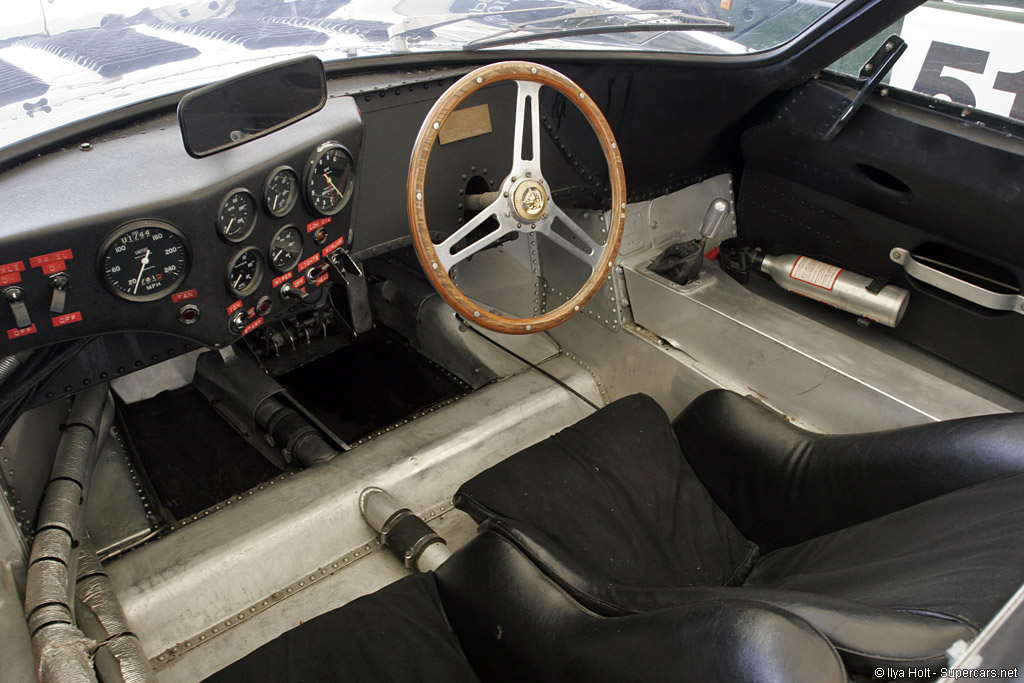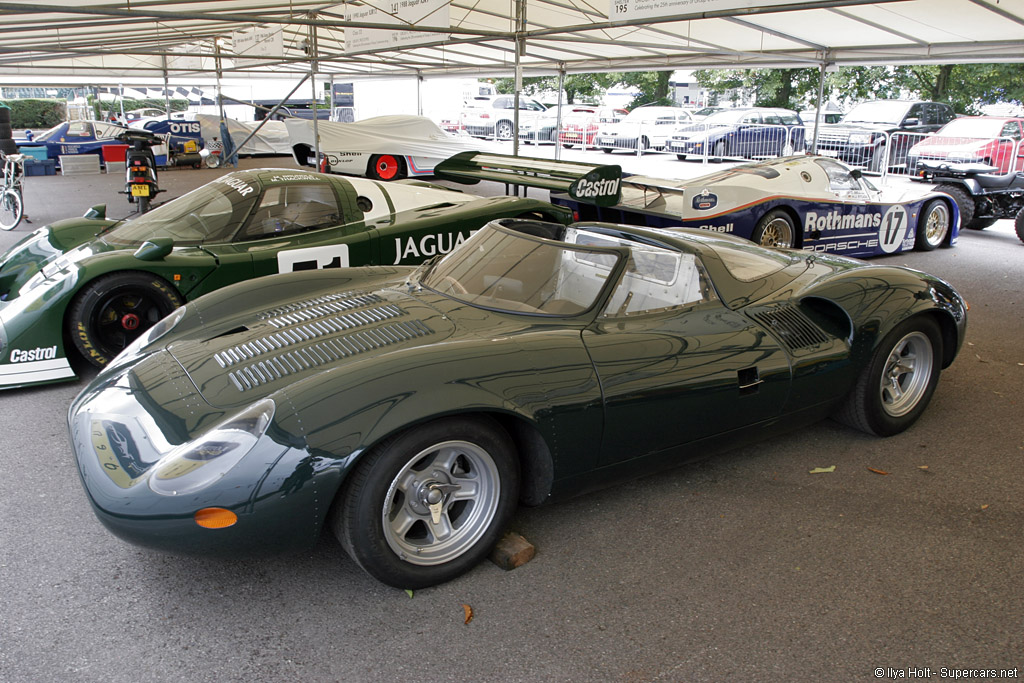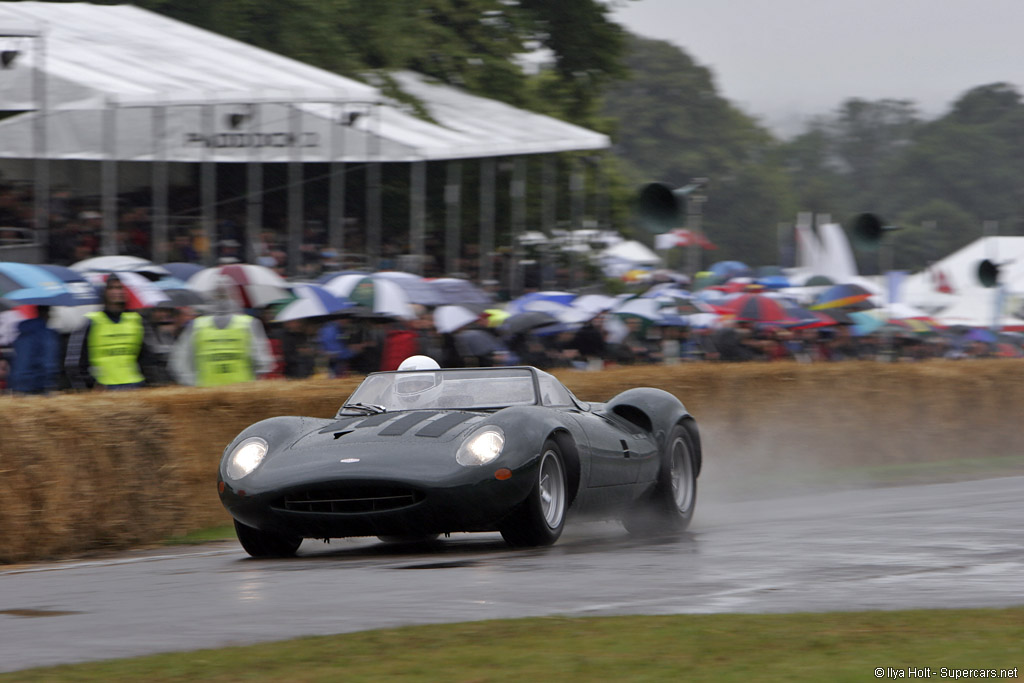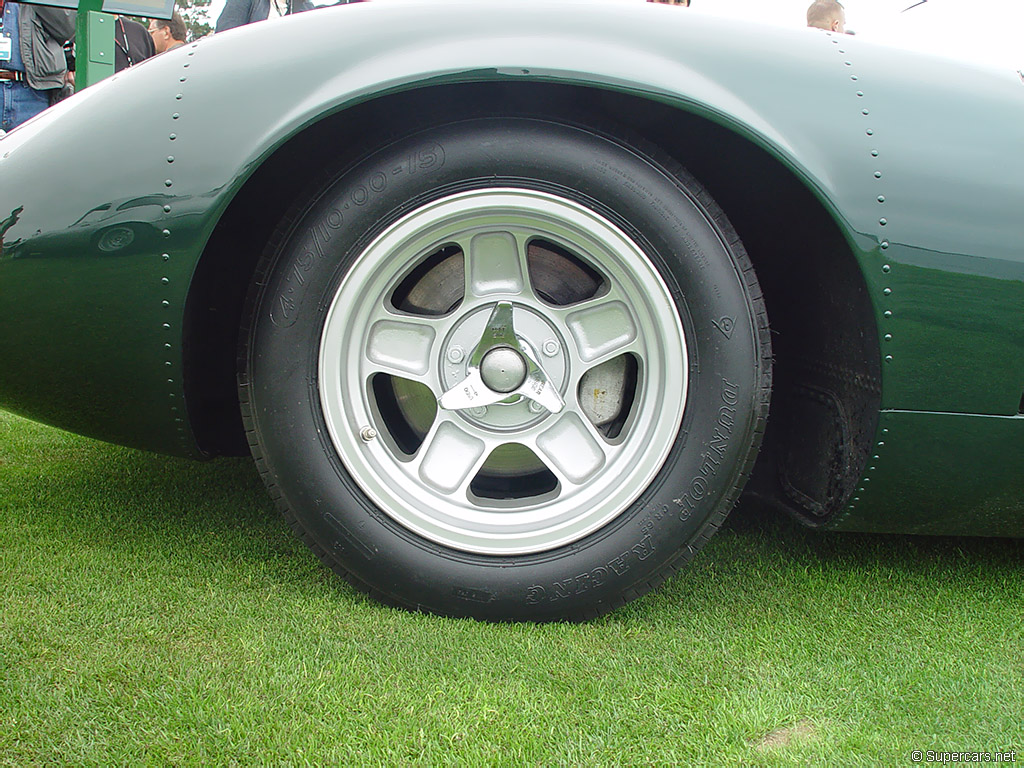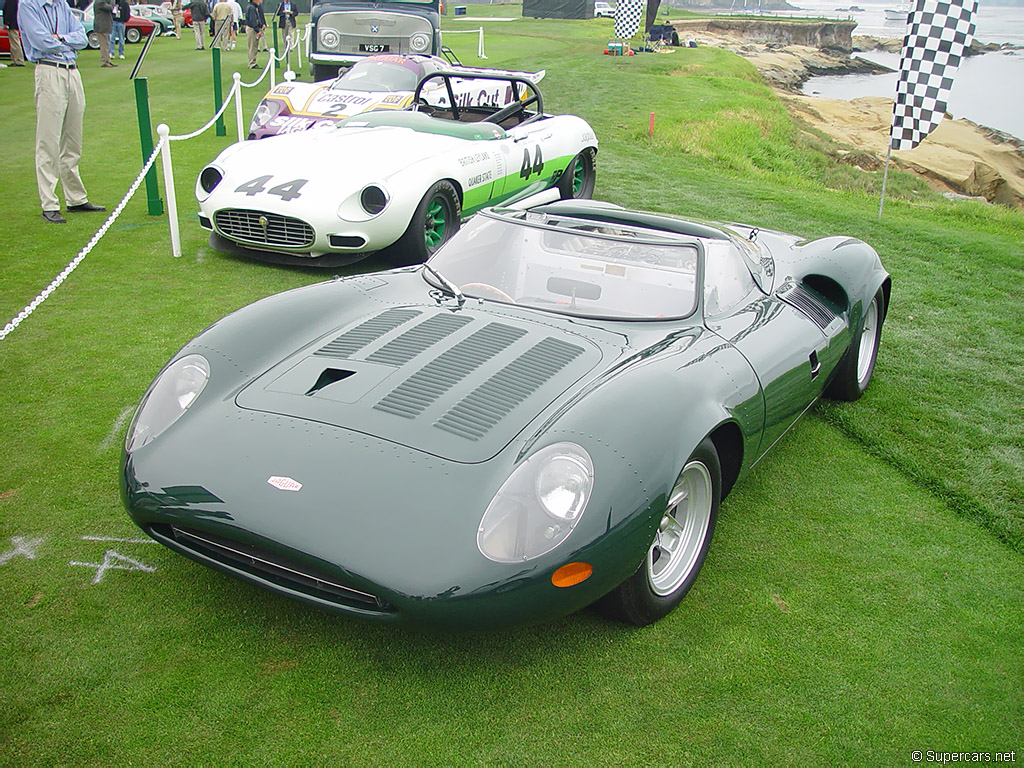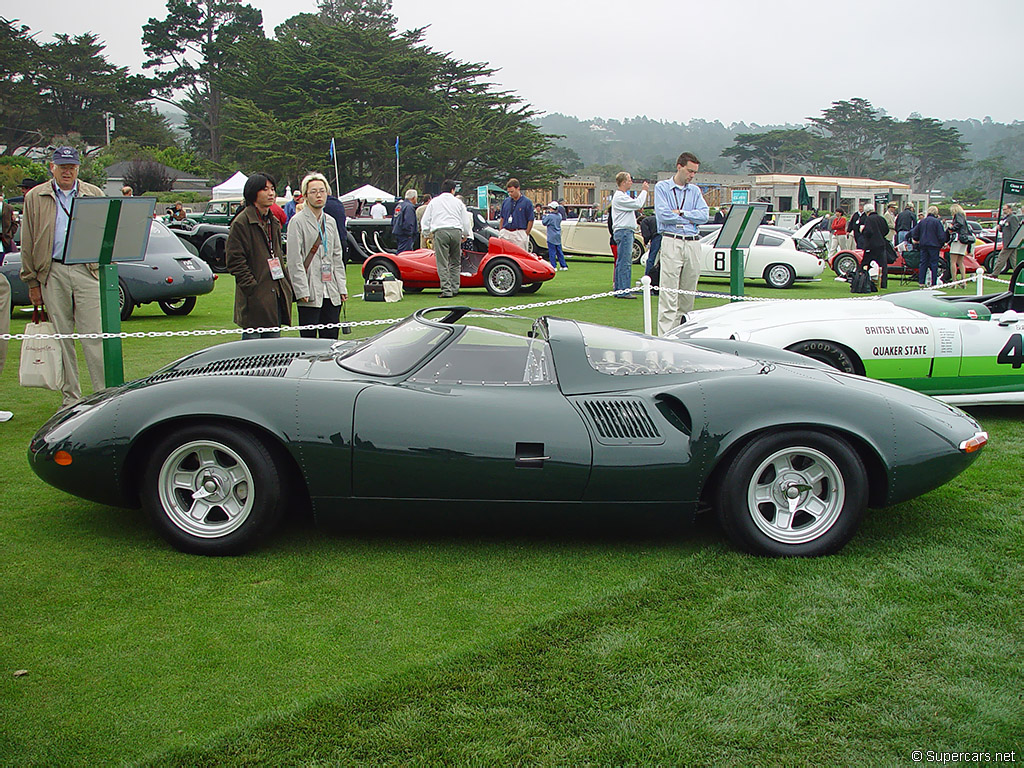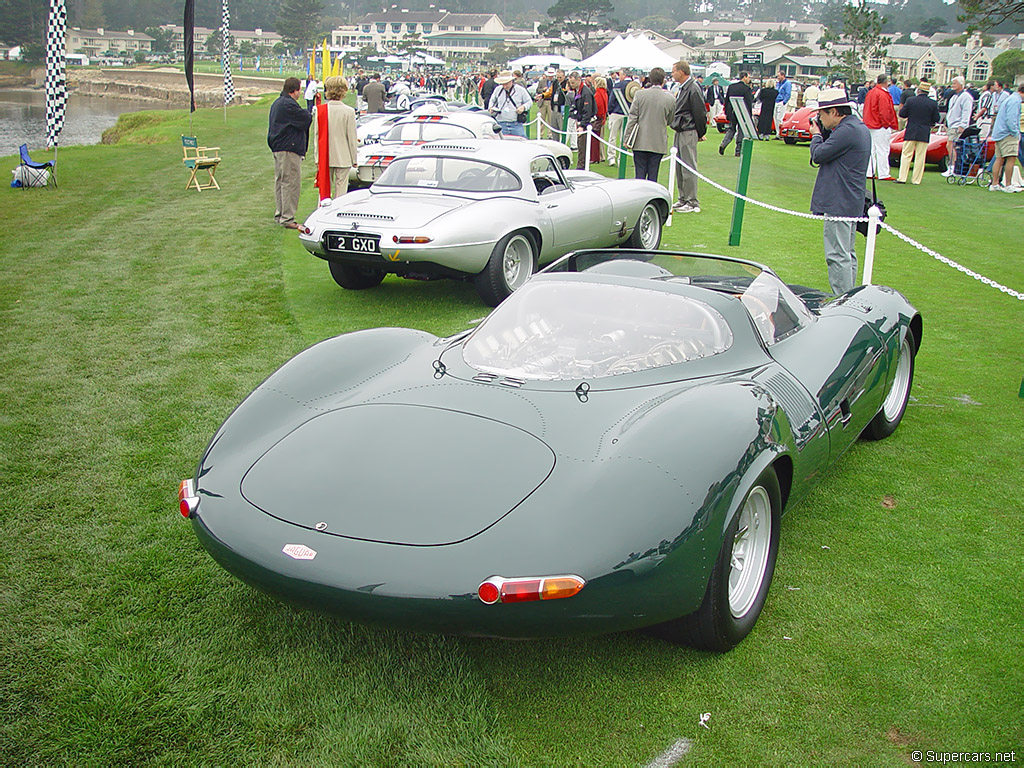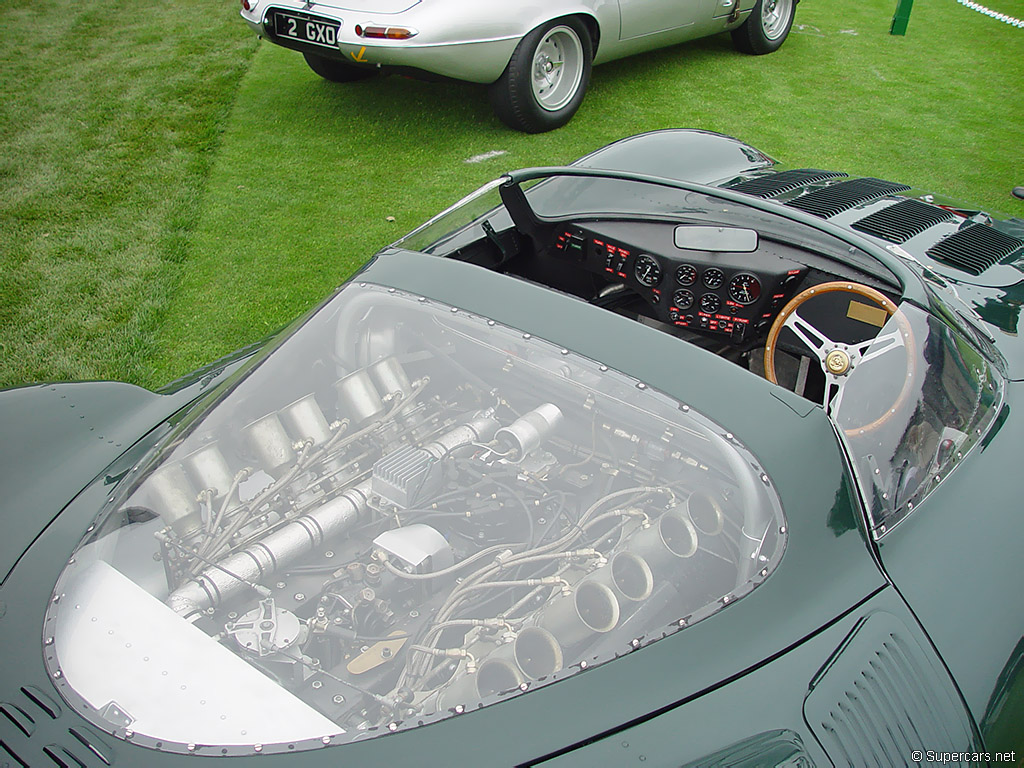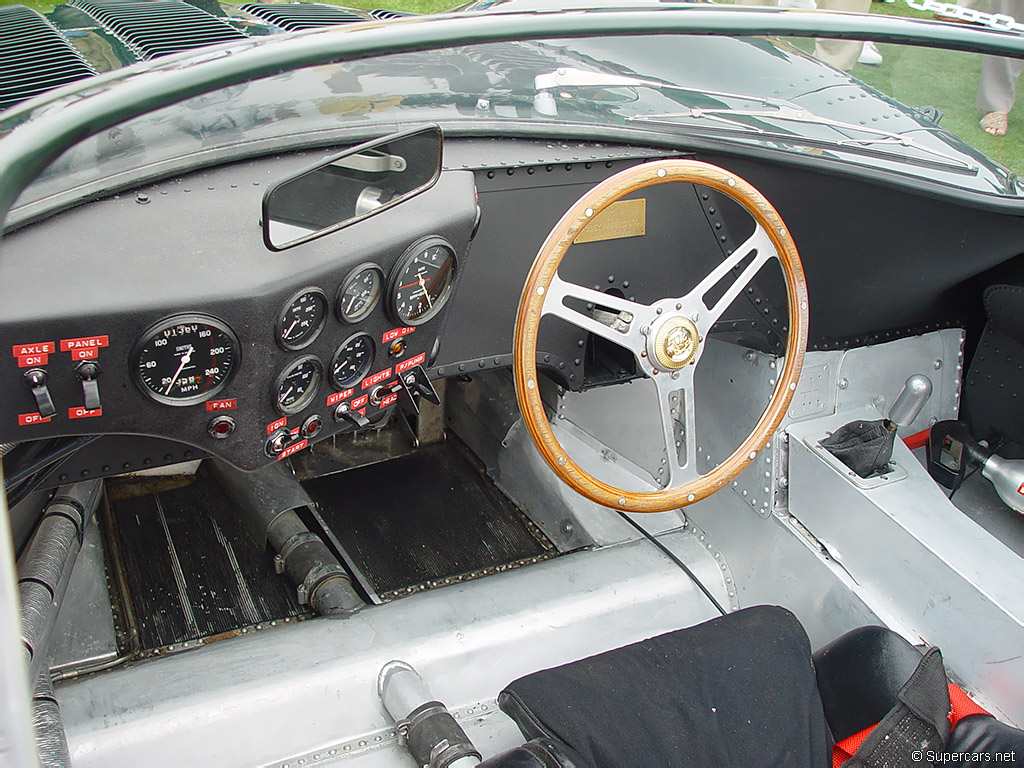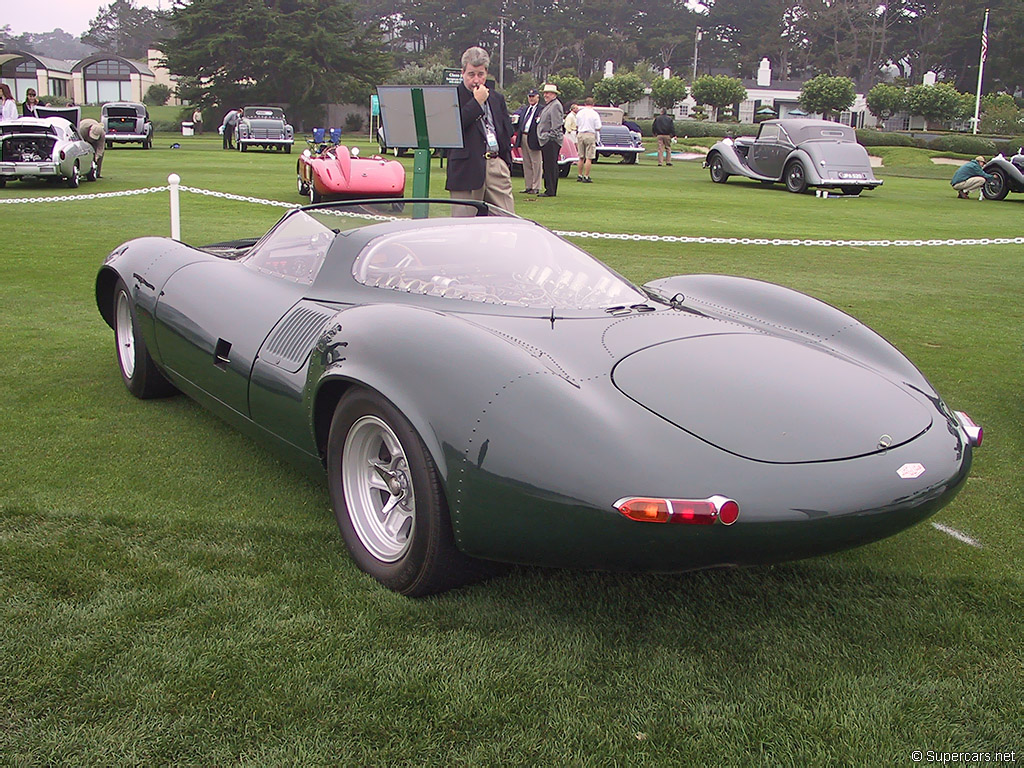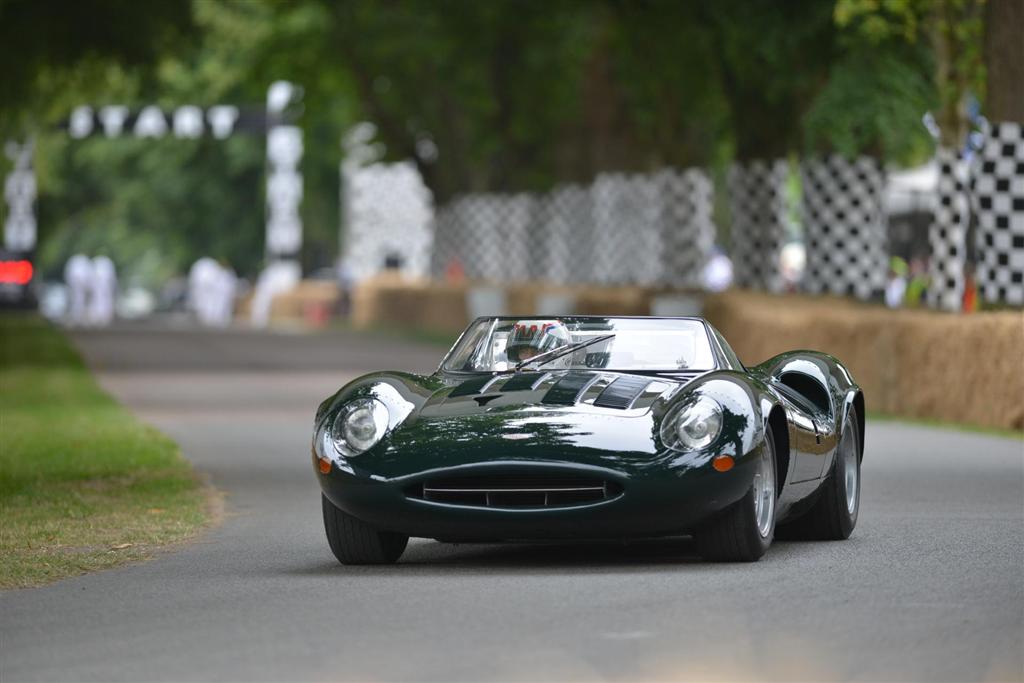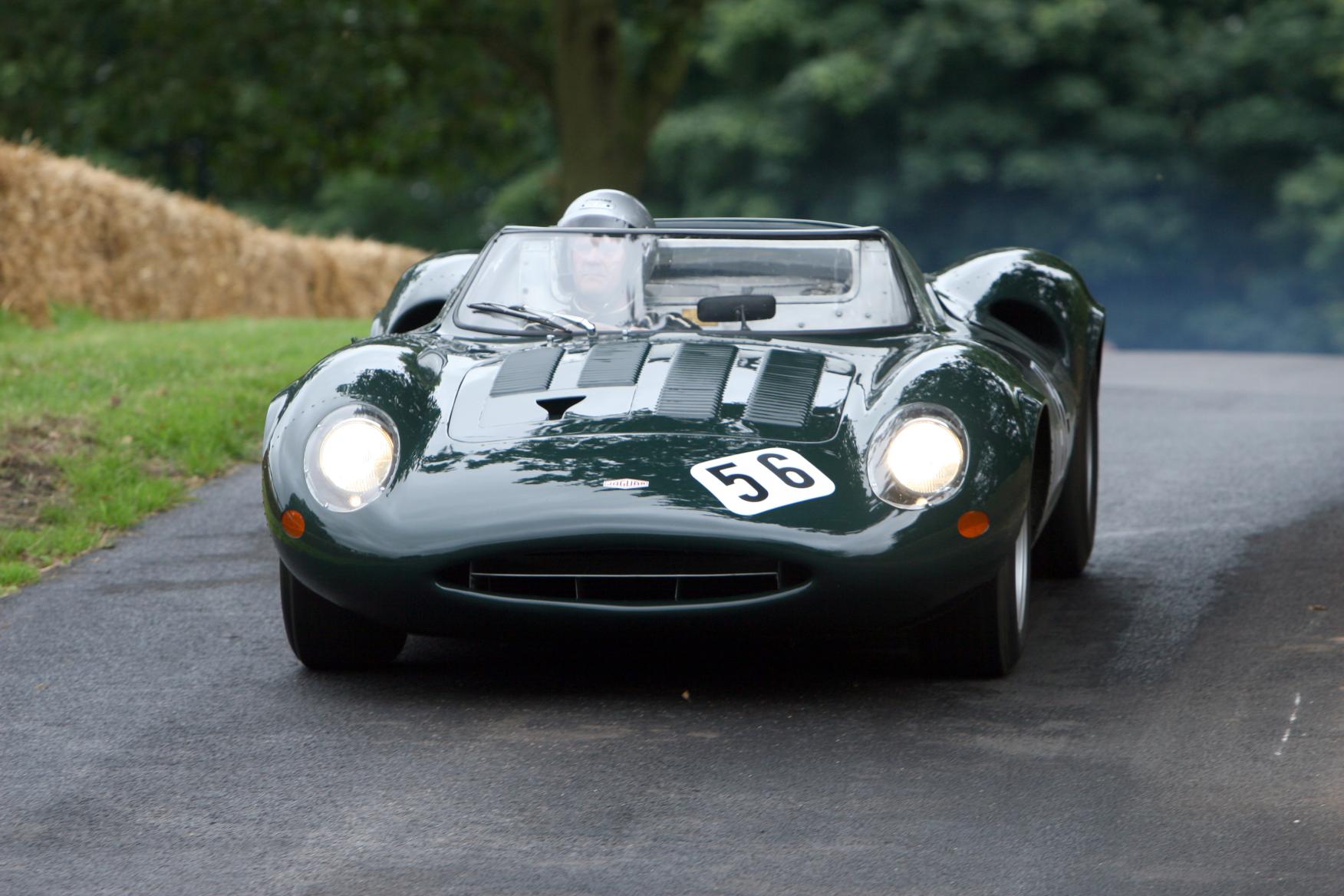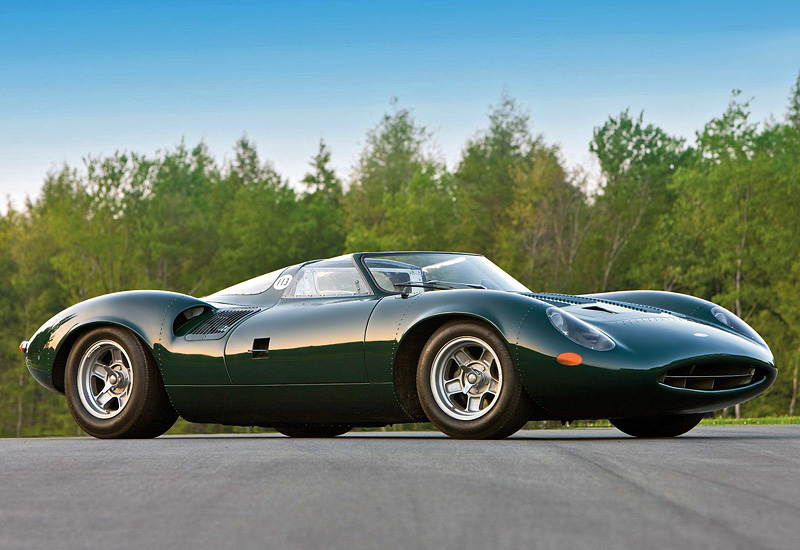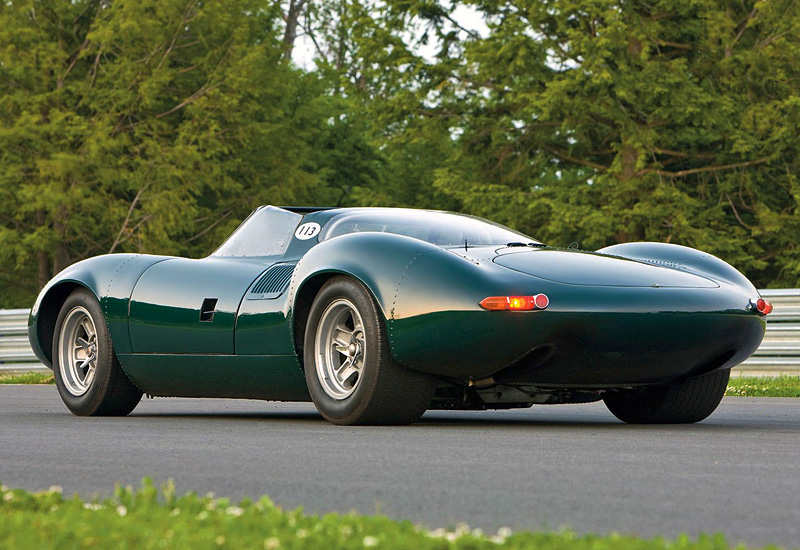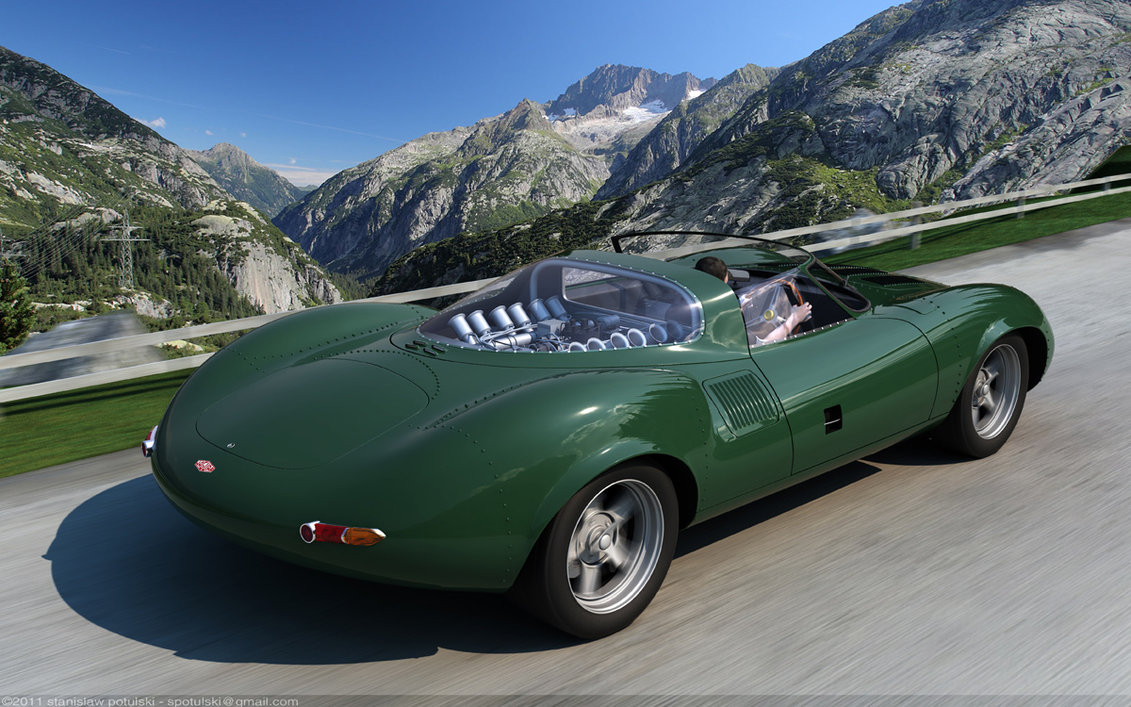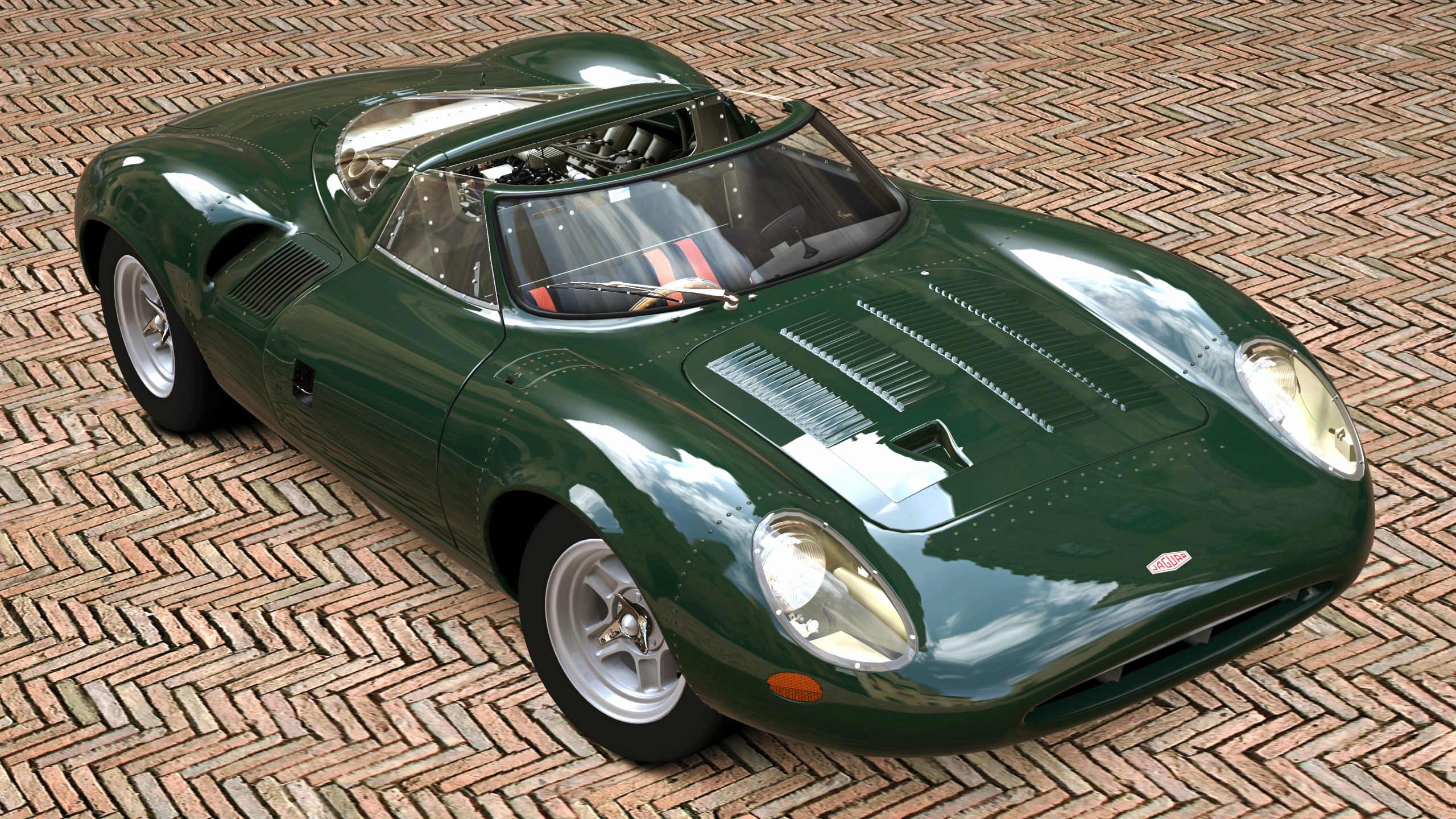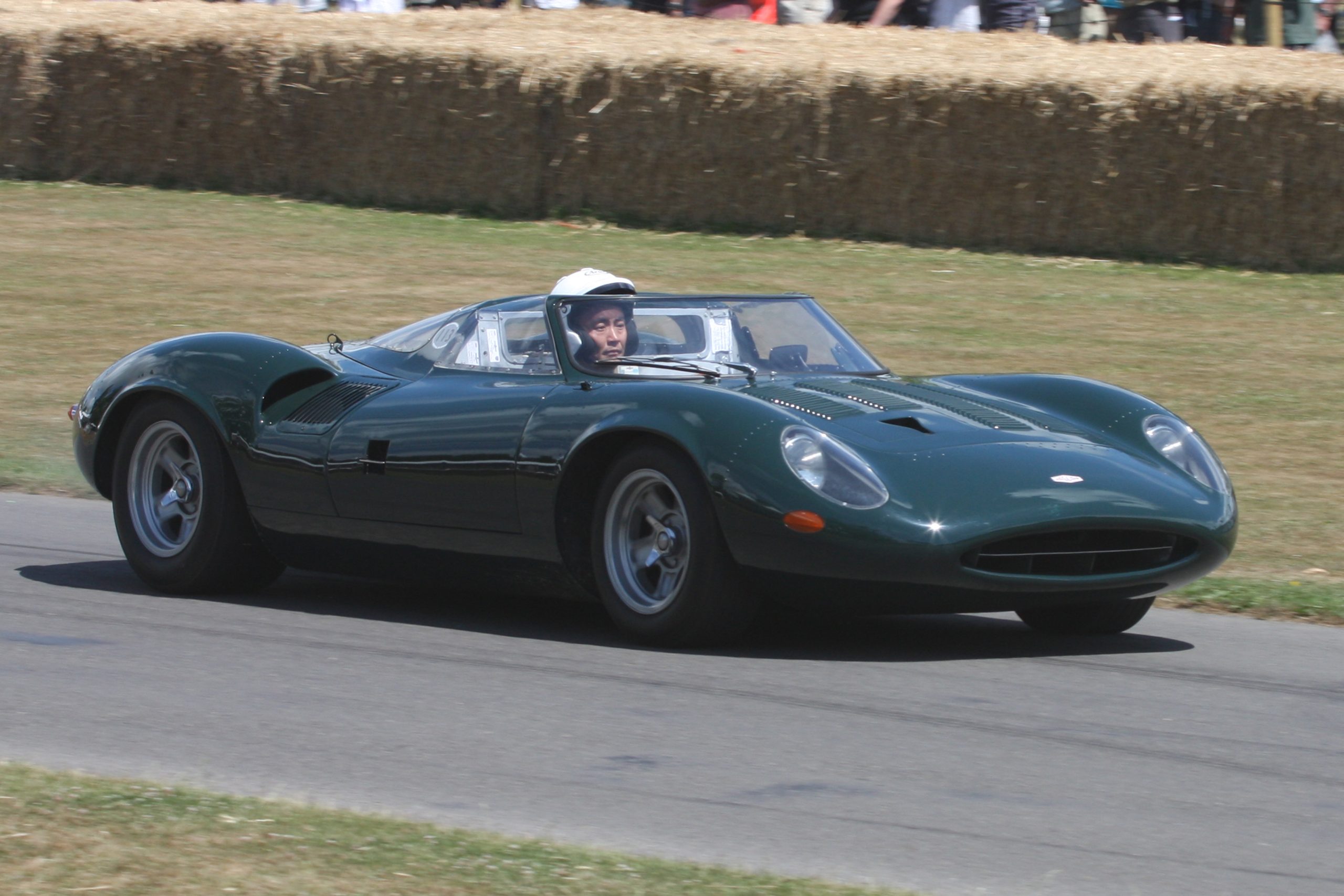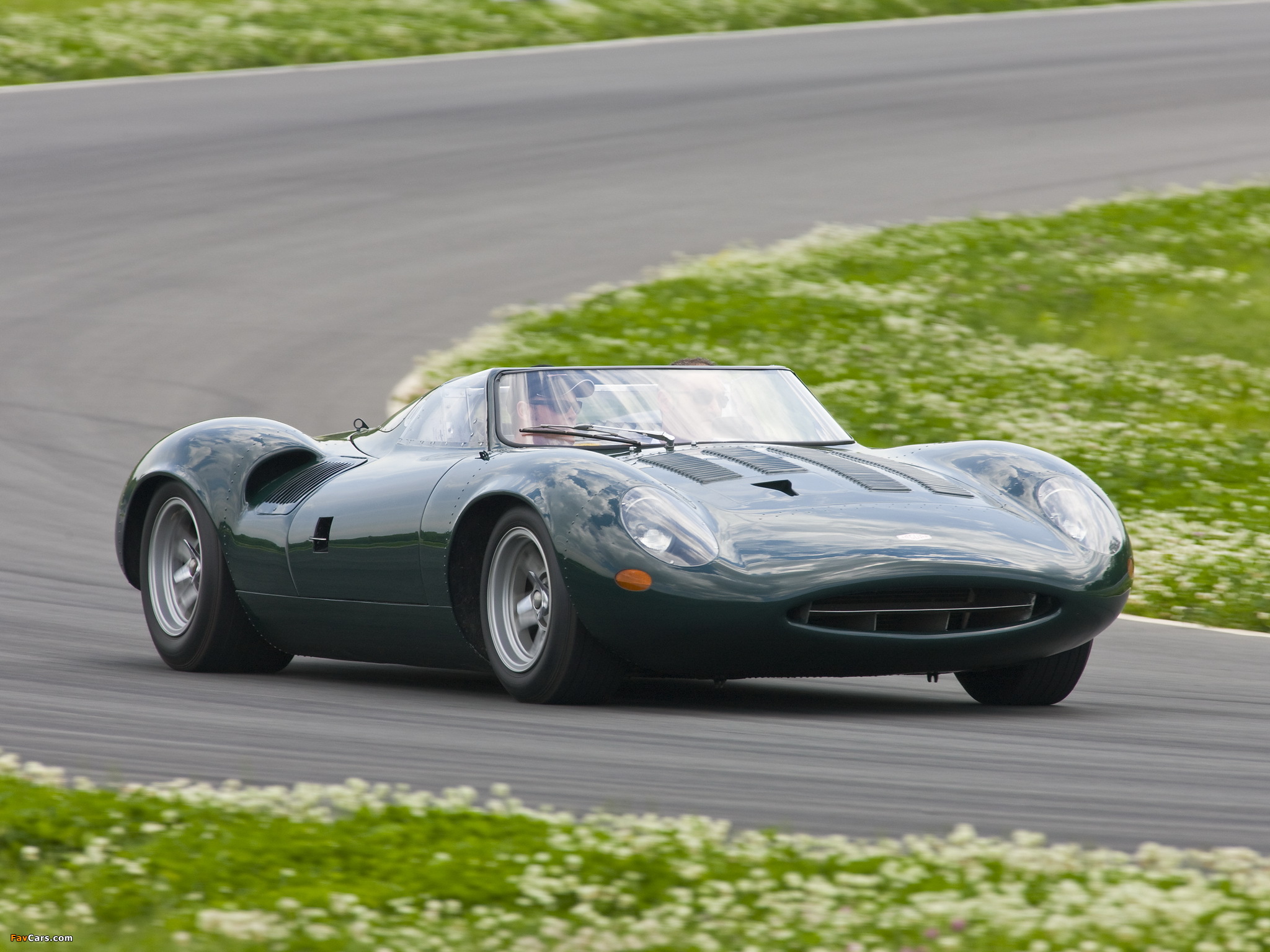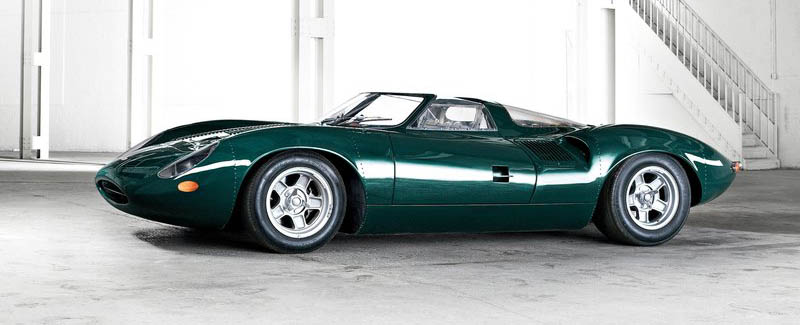1966 Jaguar XJ13
Built to bring Jaguar back to Le Mans, the XJ13 has the sad story of never competing in a race. It was initially prepared to take on the mights of Ford and Ferrari at la Sarthe, but Jaguar’s lazy attitude towards racing development caused the project finish too late to successfully race. By 1967, the regulations changed to only allow a three liter capacity and the XJ13 was rendered permanently redundant.
Built from the ground up as a Le Mans prototype, XJ13’s design used all the hallmarks of 1960’s successful race cars. This included a V12 engine in a mid-mounted position which was very new to Jaguar.
The XJ13 was built around a V12 5-litre engine engineered by Claude Baily and called the XJ6 Project. The design basically mated two DOHC six cylinder engines to a common crankshaft and aluminum block. It used Lucas mechanical injection to produce 503 bhp and was directly attached as an integral part of the aluminum chassis. The block and trans axle acted as the only support structure behind the rear bulkhead which meant that the suspension mounted directly onto the sides of the unit. The unit was originally tested with six SU carburetors in two Jaguar Mark Xs known as Project XJ5.
The gorgeous body was sculpted by aerodynamist Malcom Sayer who was also responsible for the successful D-Type and C-Type. Like those, it had the striking aesthetics that could sell cars and the functionality to win LeMans. Thus, in the hands of Norman Dewis, the car reached 161 mph down the straight at the MIRA test track and established a new lap record. The car was extensively tested and revised each time during nine separate tests from Match to August 1967. The final test was carried out by David Hobbs and Ricard Atwood at Silverstone and “Both drivers reported inherent oversteer characteristics. Hobbs indicated rear wheel steer and Attwood roll oversteer.”
Since the XK13’s engine was a testbed for Jaguar’s V12 engine, it was put in hibernation until the production V12 was launched with Series III E-type in 1971. This meant that the XJ13 became the first car to use the V12 engine which would eventually power Jaguars from 1971 to 1996. The road cars however had a chain driven SOHC engine built by Hassan/Baily.
When finally released to the public and press in 1971, the car was taken back at the MIRA test track for some promotional filming. Unfortunately, while Norman Dewis was traveling 140 mph on some high banking, the Jag lost a wheel and flipped end over end in a devastating crash. Luckily both Dewis and car survived, as it was remarkably rebuilt two years later instead of going to scrap like so many other race cars of the era. Norman recalls the incident in his book ‘Developing the Legend’:ll went well at first, with a good number of laps put in at modest speeds for filming. ‘Then to conclude’, Norman relates, ‘I was asked if I could do four fast laps. I did three, and they were quite quick, although not as quick as I had gone in testing. Then on the third lap I came onto the banking, which was the one opposite the tunnel banking where the film crew were, at about 135, and gave it full throttle to hold it in as usual. About two thirds of the way round the banking, the car lurched to the right and almost instantly went into the safety fence …”
The rebuild was completed on June 1973 and Jaguar had two engines to build a working unit with and they decided to put together an original engine with but with a burnt/welded piston. This meant the car could drive, but would never reach it’s full potential again. The original body bucks were retained by Abbey Panels, so the new body was an identical match to the first expect new fender flares were added. Jaguar kept the refurbished XJ13 in their Heritage Collection and displayed it sporadically at major autoshows. Following the rebuild, the car was features in Motor, Autocar and a show on BBC.
Sometime after 2002, the XJ fell off a high kerb cracking the engine block and destroying the sump. Afterward, the bold decision was made to once again rebuild the XJ13 and refurbish the engine to fully working condition. XK Engineering out of Coventry completely stripped the car and it’s now probably better than new. The finished car debuted at the 2007 Goodwood Festival of Speed where its full roar could be finally heard for the first time in 35 years.
Sources & Further Reading
Morgan, Andy. ‘Jaguar XJ13’. EVO 105, June 2007.
Whyte, Andrew. Jaguar: Sports Racing and Works Competition Cars from 1954, Haynes: 1987.
In Detail
| type | Racing Car |
| built at | England |
| body stylist | Malcom Sayer |
| coachbuilder | Abbey Panels Ltd. |
| production | 1 |
| engine | V12 |
| position | Mid Longitudinal |
| aspiration | Natural |
| ignition | OPUS Ignition System |
| valvetrain | DOHC |
| fuel feed | Lucas Mechincal Injection |
| displacement | 4994 cc / 304.8 in³ |
| bore | 87 mm / 3.43 in |
| engine designer | Claude Bailey |
| power | 374.3 kw / 502 bhp @ 7600 rpm |
| specific output | 100.52 bhp per litre |
| bhp/weight | 482.69 bhp per tonne |
| body / frame | Aluminum over Aluminum Tub Chassis |
| driven wheels | RWD |
| front tires | 5.25-10.50 x 15H White Spot D15 |
| rear tires | 6.35-13.00 x 15H White Spot D15 |
| front brakes | Dunlop Discs |
| f brake size | 22.4 x 303.3 mm / 0.88 x 11.94 in |
| rear brakes | Dunlop Discs |
| r brake size | 22.4 x 295.3 mm / 0.88 x 11.625 in |
| front wheels | F 38.1 x 17.8 cm / 15 x 7 in |
| rear wheels | R 38.1 x 23.8 cm / 15 x 9.375 in |
| f suspension | Armstrong Dampers, 3/4 |
| r suspension | Armstrong Dampers, 5/8 |
| curb weight | 1040 kg / 2290 lbs |
| transmission | 5DS25 ZF Transaxle |
| final drive | 4.00:1 |
| designers | Claude Bailey (Engine), Macom Sayer (Body/Aerodynamics) |


